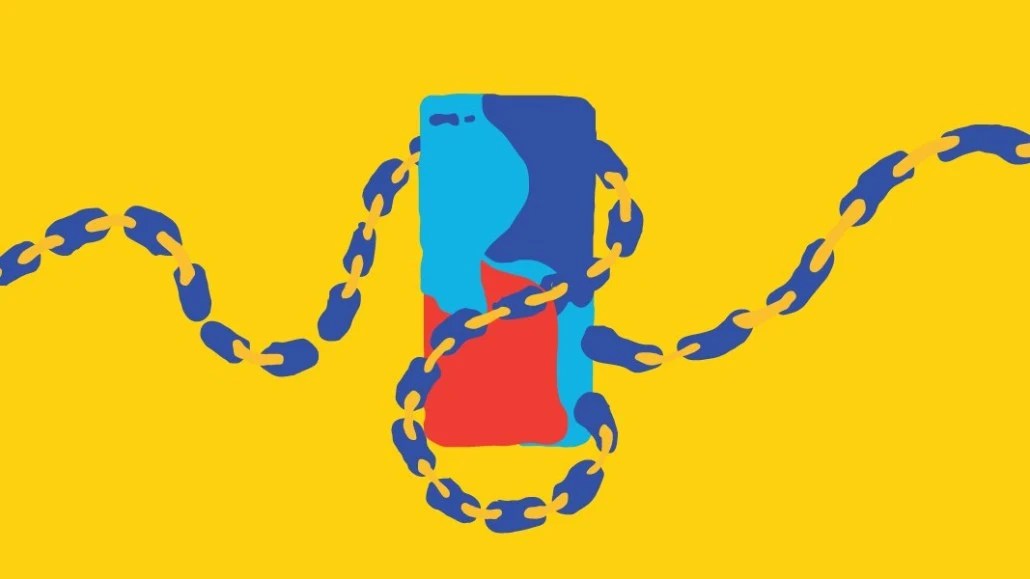
Sponsored by Bidtellect
The programmatic and digital advertising industry is well aware of the inefficiencies in buying and selling — from auction duplication and volume bias to multi-integrations and reselling. For many, these challenges can appear to be out of control, leaving programmatic teams asking the question, “how can we fix it?”
A redundant, multiple-step process to ad delivery has become the norm, but in the process has created a waste of dollars, energy and carbon. With a growing emphasis on sustainability in the ad tech ecosystem, savvy advertisers have an opportunity to innovate and create solutions to combat the problem. What follows is based on the presentation “The Future of Green in Advertising: Radical Transparency & Sustainability” by Arthur Hainline, vice president of product at Bidtellect and Chris Kane, founder and president of Jounce Media.
How ad tech got here: header bidding led to supply path inefficiencies and carbon waste
With the adoption of header bidding, publishers could use multiple ad exchanges through which each DSP could bid. However, DSPs were designed for the one-publisher-one-exchange model preceding header bidding. That technology used the number of bid requests received as a proxy for how many impressions were available for bids. As a result, DSPs often have to bid multiple times via multiple supply exchanges for the same impression. Their original pacing mechanisms attempt to capture a larger share of demand in this multi-exchange model.
In addition to working with multiple exchanges and integrating those exchanges through numerous connection points, publishers often enable one exchange to resell another exchange’s auction. However, very few publishers have no reselling of their inventory. This is what’s called a hop in the supply chain. A hop is a case in which one exchange resells another’s auction without adding value.
A short multi-hop supply chain starts with the DSP paying Exchange B, which pays Exchange A, which is then integrated with the publisher through pre-bid. Every single impression opportunity is being duplicated over and over again. And even though reselling might dilute the publisher’s payout, volume bias encourages that team to continue it; better to take a discount on a dollar than let that dollar go to a competitor.
All this reselling, duplication and volume is creating waste in the form of server-compute time when a DSP sees multiple auctions for what is really the same impression opportunity, unnecessary energy consumption thanks to the resultant server-to-server communication to resell an auction. All of this creates carbon emissions.
Contributors to supply chain redundancy
The redundancy of supply chains is the number one cause of supply inefficiency, carbon inefficiency and lack of transparency in the supply path. Buyers and sellers have redundant supply chains due to numerous factors, including auction duplication, multi-integrations and reselling.
It is overwhelmingly common for one publisher to have multiple partnerships with supply-side technology companies and ad exchanges. This leads to auction duplication, with multiple companies running auctions simultaneously for the same impression.
Similarly, it is overwhelmingly common for each publisher’s exchange partners to integrate with a given publisher through multiple connection points. Auction duplication and volume bias reward multi-integrations, often through a pre-bid connection, such as an Amazon publisher services connection, and again through a Google open bidding connection. On average, according to Jounce Media, there will be 19.5 directly integrated sell-side technology companies and 9.8 of these partners will initiate resold auctions.
To be clear: it’s not a requirement for there to be several different pathways through which the DSP’s money can reach the publisher, but that is what is commonly the case. According to Jounce, on average, resold supply chains account for 40% of display auctions and 58% of video auctions. Nearly six in 10 publishers (59%) operate at least one direct supply path that exhibits a chronic inability to clear qualified DSP bids.
How ad tech is beginning to combat waste and inefficiencies
The primary causes of redundant supply chains are also the major contributors to supply path carbon emissions. Each step takes up extra energy, extra compute time and releases excess emissions. This includes the Scope 1, 2 and 3 emissions data of each party involved per impression. Scope 1 and 2 emissions are those owned or controlled by a company — such as facilities and utilities — while Scope 3 emissions are those a result of activities by a business but don’t occur from sources owned or controlled by it. Scope3, named for these emissions, is the first company to begin tracking such carbon emissions by advertisers.
Since an inefficient supply path creates emissions, tracking emissions is the easiest way to begin to see these inefficiencies and energy waste clearly. In Bidtellect’s platform, users can alter the pacing rate to participate in fewer auctions artificially, optimize towards supply tiers, block domains with high emissions thanks to Scope3’s data, as well as target sellers.json. With these new tools and research, advertisers can begin to reduce carbon waste and initiate a shift to a more efficient supply path for all.
Already, the data points to a correlation between supply quality and supply-path emissions. That is, the higher quality of the site and the more efficient the supply path, the less wasted dollars and carbon emissions, which is welcome news for advertisers from a performance standpoint, and a bonus to saving the environment.
More from Digiday

Rembrand’s CEO wants to grow virtual ad placements in streaming, and he’s looking elsewhere for models
Omar Tawakol wants to improve advertising within the streaming world, and is working with advertisers and publishers to improve that experience.

Marketers are keen to use generative AI in ad campaigns, but hidden costs lurk
Marketers across the industry want to use AI to cut down on time spent in creative production. It’s not so simple in practice.

2025 was rough for Target. It could also be the year when its turnaround began
Much of the front half of the year for Target was defined by the company’s decision in January to pull back on DEI initiatives.








